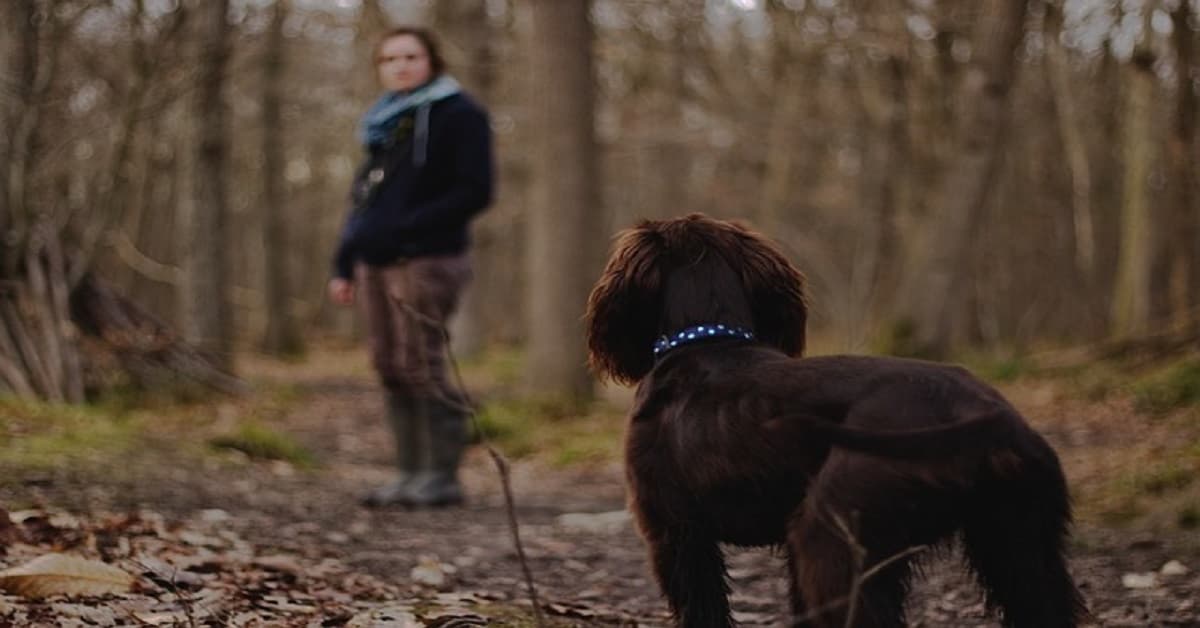TABLE OF CONTENT
- 1.Benefits of Training Your Dog
- 1.1.Main Advantages of Obedience Training
- 1.2.Basic Guidelines for Obedience Training
- 2.Leash Walking Training for Puppies
- 2.1.The Three-Step Guide:
- 3.Teaching Your Dog, The “Sit” Command
- 3.1.The Three-Step Guide:
- 4.Teaching Your Dog, The “Down” Command
- 4.1.The Two-Step Guide:
- 5.Teaching your Dog, the “Come” Command
- 5.1.Why Your Dog Doesn’t Obey Your Come Command
- 5.2.The Comprehensive Six-Step Guide:
- 6.Teaching Your Dog, the “Stay” Command
- 6.1.The Three-Step Guide:
- 7.Teaching Your Dog The “Heel” Command
- 7.1.The Comprehensive Six-Step Guide:
- 8.Teaching Your Dog, The “Go-To” Commands
- 8.1.The Nine-Step Guide:
- 9.Teaching Your Dog, The “Leave It” Command
- 9.1.The Seven-Step Guide:
- 10.Teaching Your Dog, The “Stand” Command
- 10.1.The Six-Step Guide
- 11.Teaching Your Dog The “Fetch” Command
- 11.1.The Five-Step Guide
- 12.Conclusion
Benefits of Training Your Dog.
Without a doubt, dogs are the most popular pets on earth. Apart from their undying loyalty to their adopted parents, they have the unlimited potential to be trained to act exactly how we want them.
They can be trained to do limitless things from the basics of standing, sitting down on a spot, and lying down to complex acts like acrobatic displays to bomb detection.
Each dog comes with its own personality traits, this makes the training path for each dog unique, but time and time again, it has been proven that any dog can be trained to behave as expected, all the trainer needs is just to commit.
Here, we are going to talk about the very basics of training methods that have worked time and time again on countless dogs.
More emphasis would be placed on using positive reinforcement here, this is because it has been proven to be the most human and effective option of all dog training methods.
We will be using positive reinforcement to do Obedience training for our dogs, another advantage of this training technique is that it helps to build a stronger healthier bond between you two.
It also helps the dog and yourself to learn how to communicate with each other effectively. You will understand what is expected of each other in every situation, and also help to create a healthy respect for each other.
All this put together will make your dog a more responsible member of the community, he or she will understand better how to act around other human beings and pets, and more importantly, your dog would not develop bad habits like digging, excessive barking, chewing on your furniture and all the other disadvantages that come with bad habits.
Main Advantages of Obedience Training
Obedience training is one of the best things you can do with your dog to enhance the relationship between you two. It creates a lot of clarity in your dog’s life and removes any type of confusion. Your dog gets to understand what you term right or wrong and adheres to it properly.
When obedience training is done in the right way, you will see that it is worthwhile. You will have a confident, calm, and disciplined dog that can go virtually anywhere with you without putting you to shame.
Most times, you will see that because of the training, you will be confident enough to leave the dog in some surroundings alone for a while with the staunch belief that your dog would behave himself or herself properly.
A dog or a puppy that has passed through some obedience training program is a far safer animal to be around. He or she understands what is expected of them at any time and there is some mutual trust and respect between you two.
Another Advantage to obedience training is that your dog gets all the physical activity it needs to be fit, he also gets mental stimulation by obeying the commands you hurl at him, and is the perfect excuse to spend time with your dog.
What we will be dealing with here is the core foundation on which your dog can learn so many additional skills. You will establish your role as the alpha whom your dog can look up to for guidance.
Lack of Training For Your Dog is Dangerous.
Animal shelters are full of dogs and puppies who because of their lack of training, have been deemed worthless by society (though no fault of theirs).
Their lack of training and unruly behavior makes them useless to people. By no means can such dogs be trusted around kids and family members as they can end up biting anyone.
One very bad trait about untrained dogs is their propensity to challenge authority. In fact, this is what many dog owners who don’t have patience detest a lot.
This very act in the dog’s mind is a form of testing your leadership, but in the normal human world, the dog would be deemed useless some examples of these behaviors are jumping on your guests, constant barking without reason, running out of the door when you are about to step out, insisting on eating at the dinner table or sleeping on our favorite sofa…
The examples can go on and on, the endpoint is that the dog becomes a nuisance to your and the community at large.
Basic Guidelines for Obedience Training.
Below are some tips on basic guidelines for your dog obedience training to keep in mind during your training session. They are tried and proven tips, try as much as possible to adhere to them in order to get the best out of your training process.
- Always praise and reward your dog when he carries out a command properly and apply instant correction when he does something wrong.
- Repetition of the commands is essential for the dog to get the commands effectively. Stick to what you do and keep on keeping at it. No matter the hype, our dogs are just animals, the only thing that separates them from the others is their desire to please us.
- Be consistent and clear, make it easy for your dog to understand what command is being given.
- Be realistic with your dog, don’t punish him or her for something you have not yet taught them.
- Keep the training sessions short and fun for your dog.
- Make your dog master the commands one at a time, and more importantly, don’t rush him. It is important for the dog to develop the mental building blocks for the commands properly, mixing them up too fast can lead to confusion (This is like learning the alphabets and trying to make complex sentences at the same time).
- The best person to train your dog is you. Remember, the trainer at the training school will not live with your dog, it is you and your family. Anything that puts you in charge of your dog’s activity should be welcome to you.
- As you progress, test the commands in different situations and places. The more the dog adheres to the commands here, the more imprinted the commands will be in them.
- Try and make the commands part of your daily routine with your dog e.g You can use the sit command before giving him a meal.
- Only correct your dog when you catch him or her in the wrong act.
- Try and find out what motivates your dog and take advantage of it in the training sessions.
Leash Walking Training for Puppies
There are some commands and training that can be given to your dogs, but there are some training that needs to be given to your dog early in their life.
Walking on a leash is one of those training that your puppy needs to be given at an early age. It is important for both you and your puppy to master this training before he gets older.
It makes the puppy safer and easier to walk with and makes walking with him or her an experience you two can look forward to.
Following the guidelines, we are going to outline here, you should have your puppy leash trained in a matter of weeks. Some puppies will take much longer but you don’t need to worry much about that, your goal from here on is to communicate clearly what is expected of your puppy when on a leash and what is not.
The Three-Step Guide to Leash Walking:
Number 1: Getting Familiar with the Collar
You need to get your puppy familiar with the collar as soon as he or she gets home. All it entails here is getting your young puppy to wear a comfortable collar on his or her neck.
You can do this when your puppy is distracted like when you are feeding them or when they are playing with you.
Once you do this leave them for a while. The puppy will try to remove the collar by scratching and clawing at it. Some may roll-over in a bid to remove the collar, at this stage just ignore them.
When the puppy seems relaxed with the collar, you can remove it if you choose to. This needs to be repeated until the puppy gets used to wearing the collar.
Number 2: Getting Familiar with the Leash
When you notice that your puppy is comfortable with the collar, it is then time to introduce the leash. The process of putting the leash on the collar is basically the same as putting the collar on the puppies’ neck.
When the leash is put on the collar, allow the puppy to move around the house, under your supervision. This is to enable them to get comfortable having a collar and a leash on them.
Number 3: Total Leash Training
By now your puppy should be comfortable wearing the collar and leash. Now you should start the total leash training.
The first training sessions should very fun, sharp, and straight to the point. Normally at the beginning of your relationship, your puppy would willingly follow you around everywhere.
We can easily take advantage of this, start with small walks around the house. As far as your puppy is walking within the range of the leash and not trying to pull you along, offer praises and treats.
When he tries to pull on the leash, just stop and call him back. The aim of this is to imprint on him that he can’t get anywhere by pulling on the leash. When he comes back to you, praise him and continue the walk.
The same thing should be done if he sits down while walking.
The simple reason is that tugging the leash at this stage only tells the puppy that whatever he is doing is being acknowledged and that only encourages him to continue the same. But when he is ignored, it sends a message that the act will get him nowhere.
This training method is suitable mainly for puppies because, at this stage, they are very open to suggestions. All you need is some persistence and patience with your puppy, and very soon, you will have him walking on a leash without a problem.

Hi, I am Charles Nwankwo Editor-in-Chief, Mydoggything.com. Gleaning from Professional Dog Trainers, behaviorist, Registered Veterinarians, and Breeders. We are passionate about making dog care easy for you. My job is to make sure that you get the best-updated dog care information to understand and take care of your dog or dogs.

